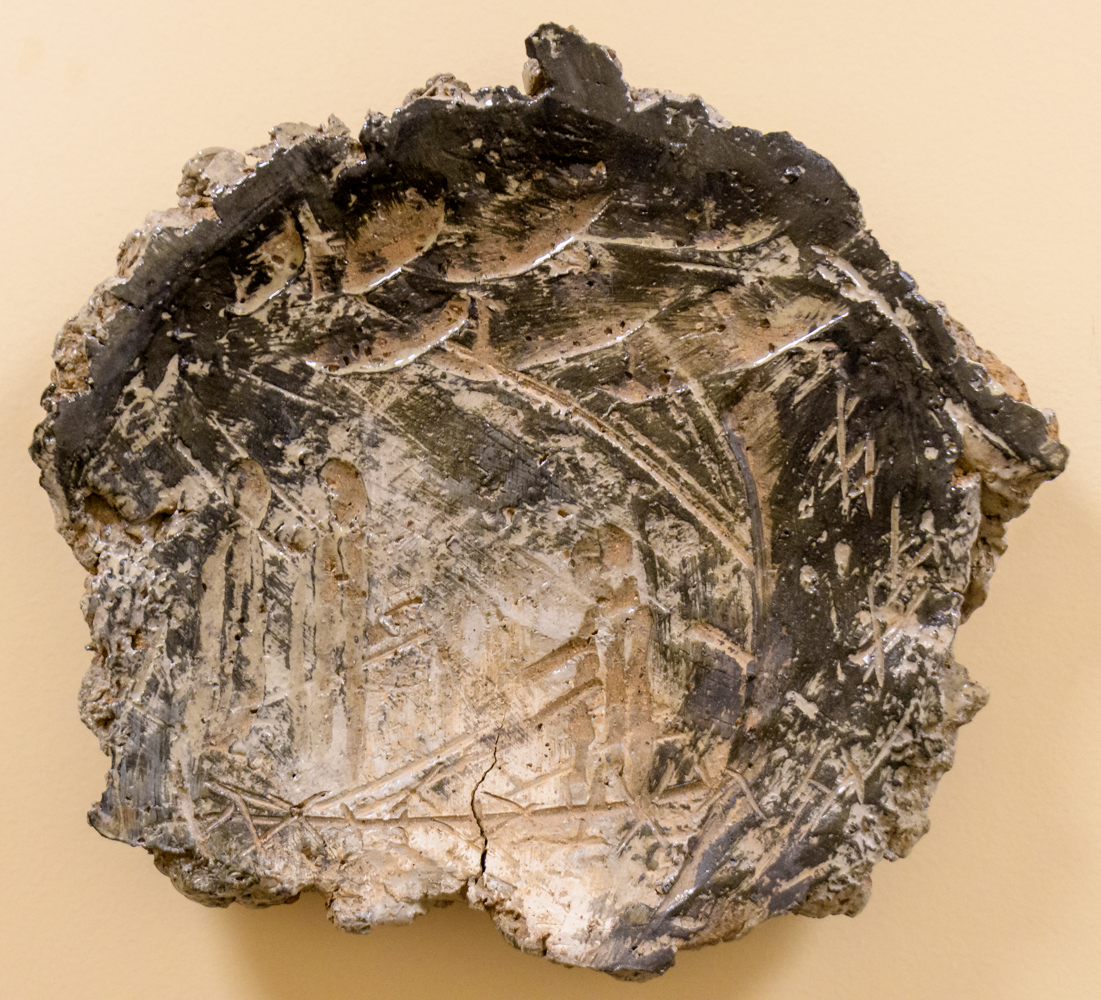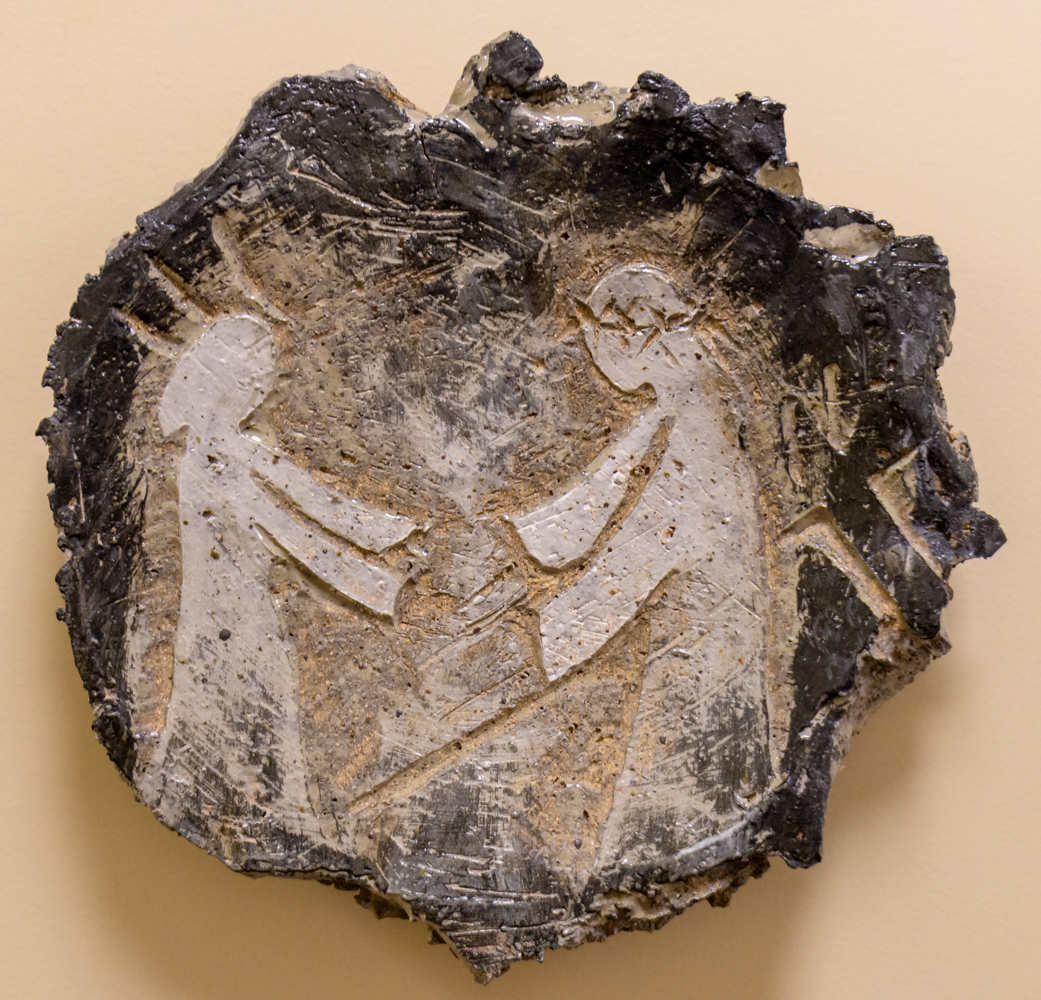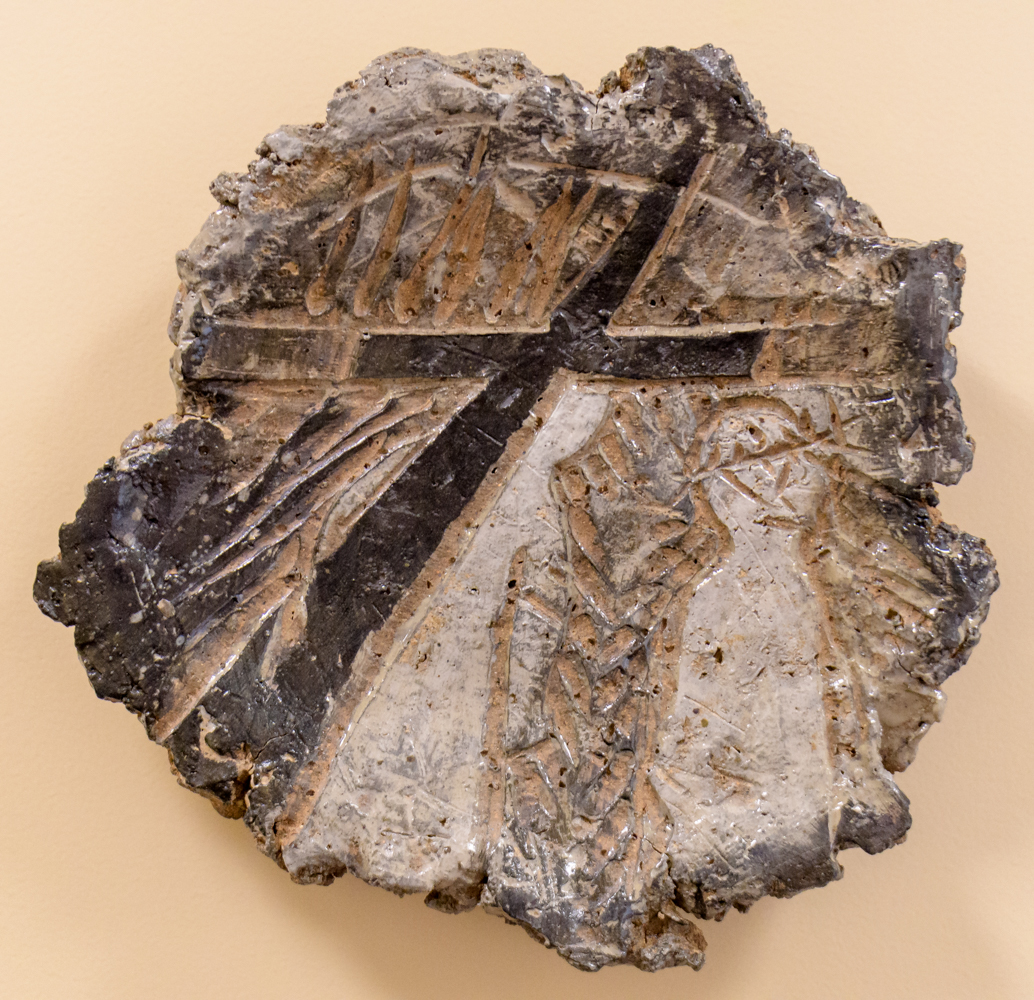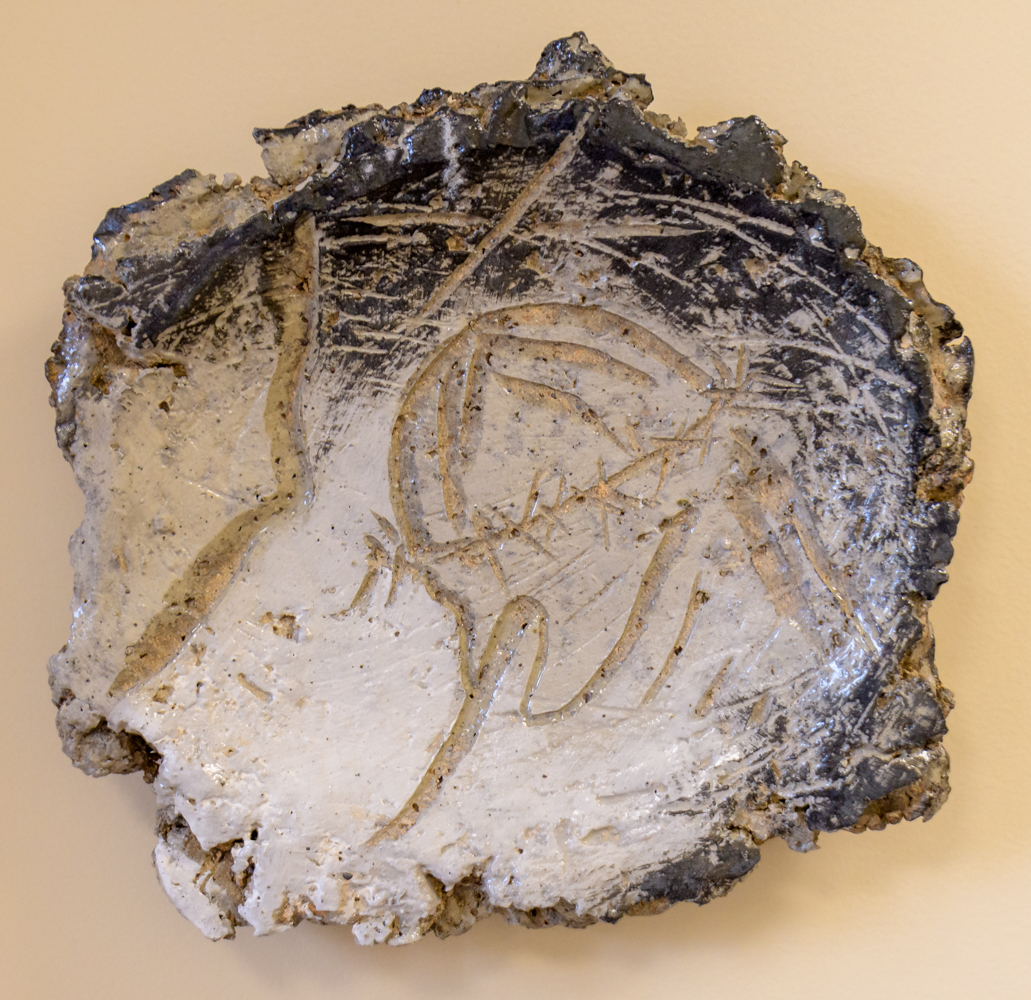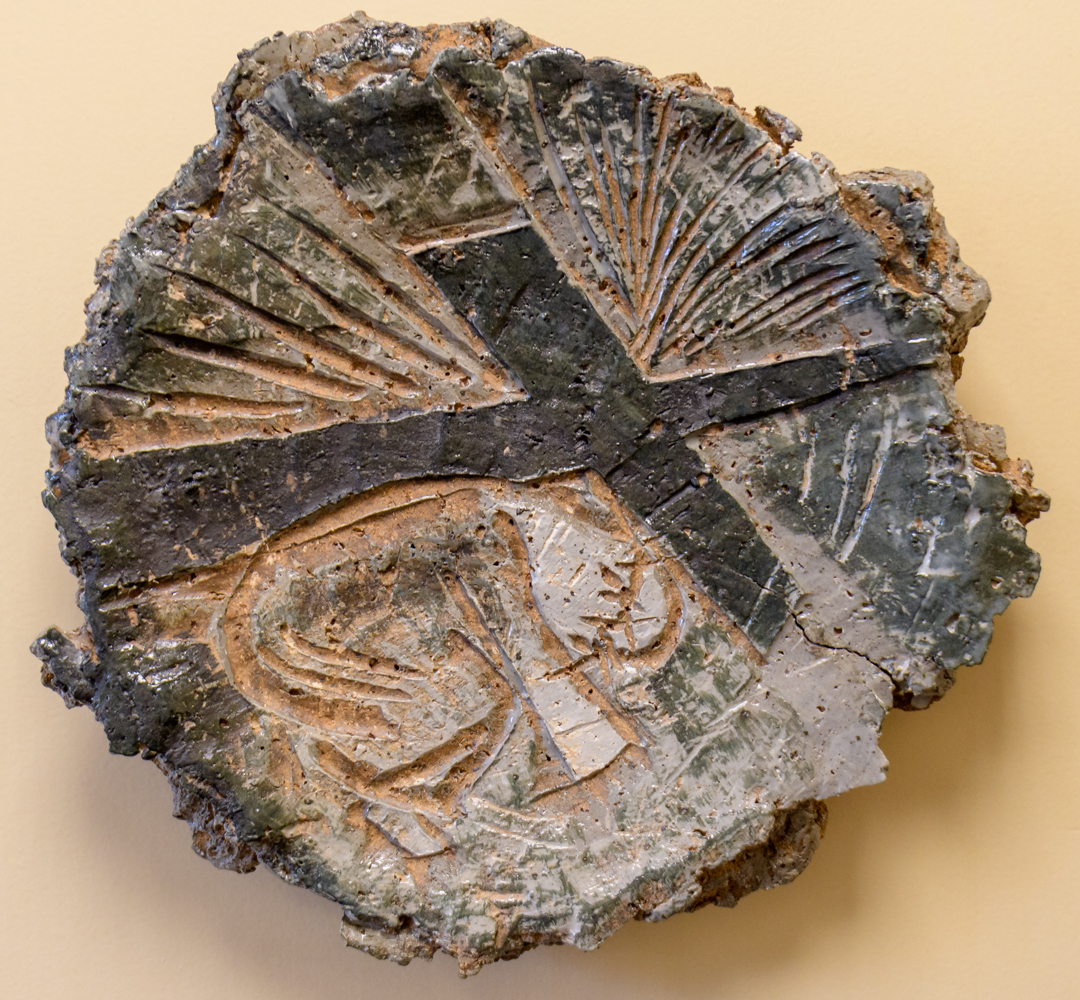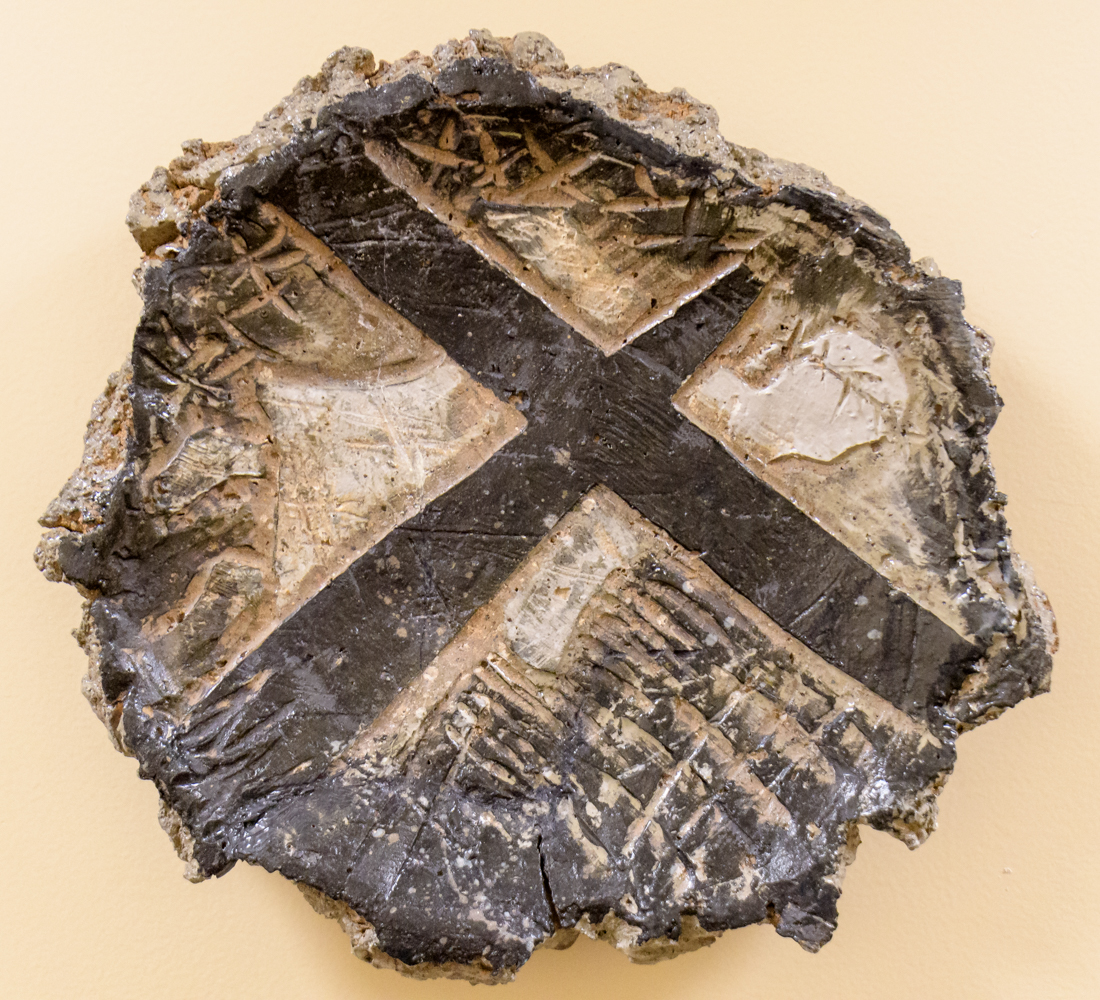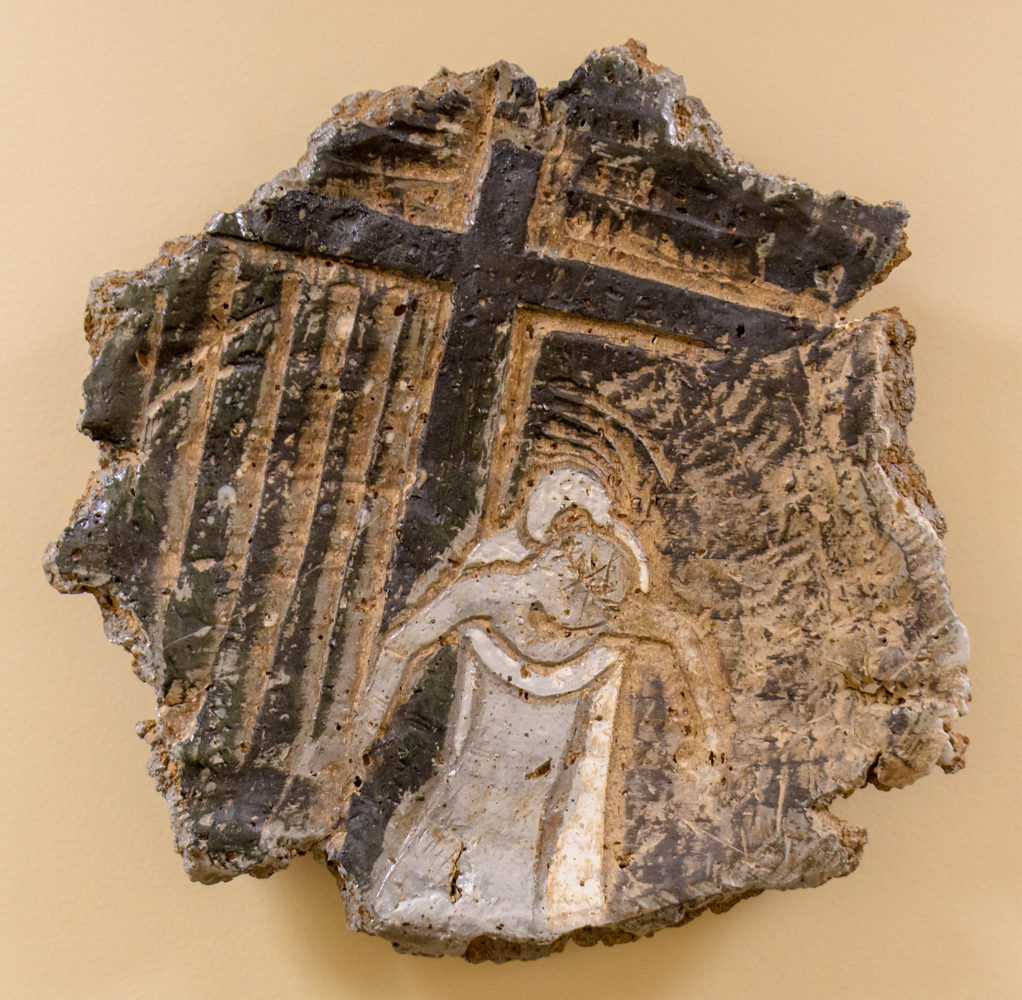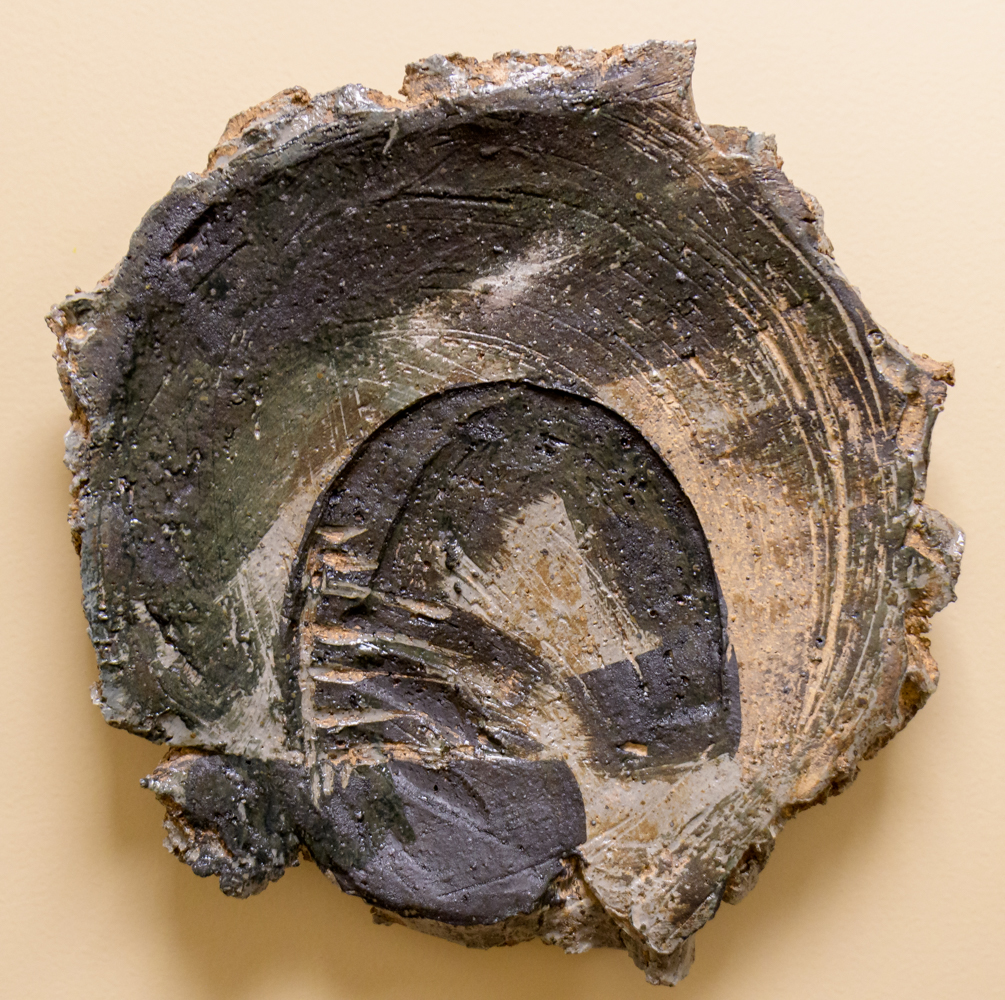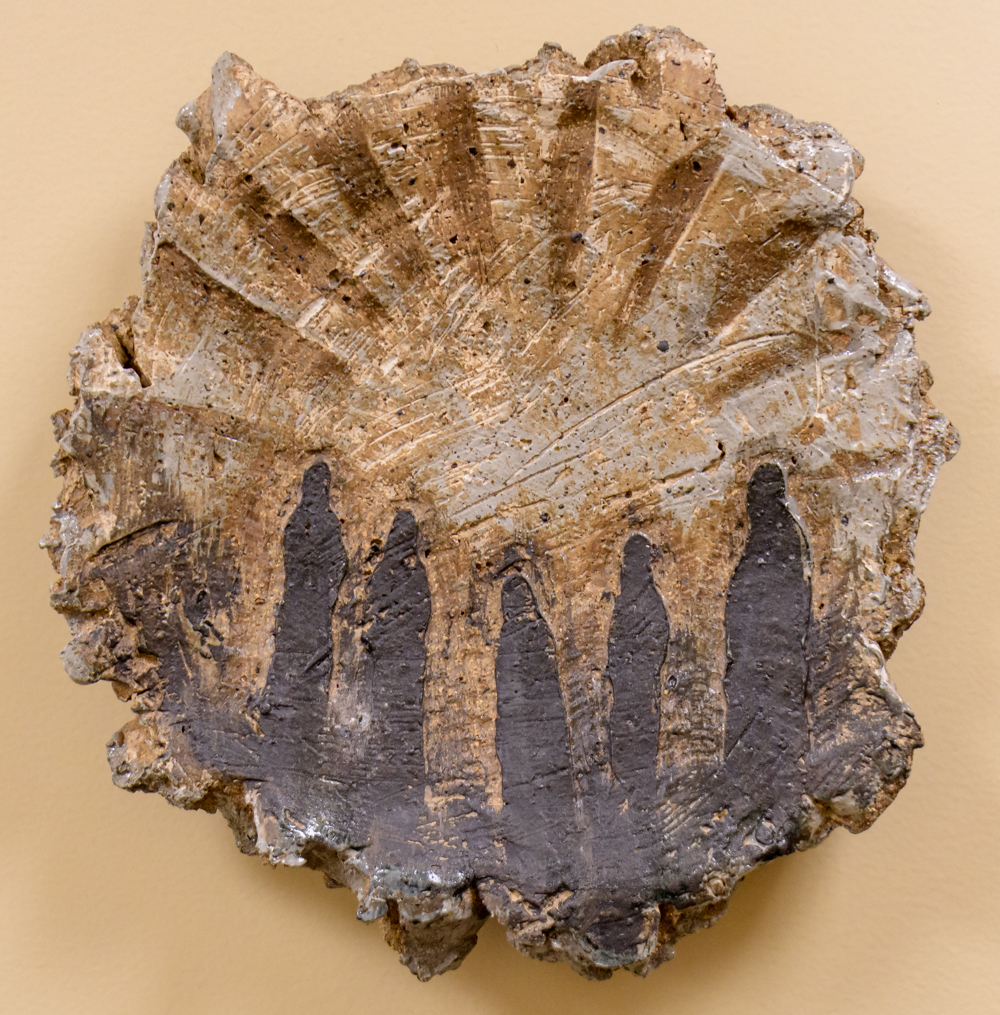Stations of the Cross
The “stations of the cross” is an ancient practice using images depicting the journey of Jesus to the cross. The accompanying scriptures and prayers walk through the events of Christ’s passion. In participating in the stations of the cross Christians make a spiritual pilgrimage of their own through the events, reflecting and meditating on the images to provide a guide through the experience.
Hesston Mennonite Church has had a tradition of engaging in the practice of the stations of the cross during Holy Week. The church is now blessed with a permanent art installation by local artist Hanna Eastin depicting the different stations. May the art be a meaningful experience this Holy Week and well into the future.
~ Mitch Stutzman (Project Coordinator)
Please be patient as the images load. Click the images to see an enlarged version. If you would prefer an image and title version, click here.
Jesus in the Garden of Gethsemane
Then Jesus went with his disciples to a place called Gethsemane, and he said to them, “Sit here while I go over there and pray.” He took Peter and the two sons of Zebedee along with him, and he began to be sorrowful and troubled. Then he said to them, “My soul is overwhelmed with sorrow to the point of death. Stay here and keep watch with me.”
Going a little farther, he fell with his face to the ground and prayed, “My Father, if it is possible, may this cup be taken from me. Yet not as I will, but as you will.”
Then he returned to his disciples and found them sleeping. “Couldn’t you men keep watch with me for one hour?” he asked Peter. “Watch and pray so that you will not fall into temptation. The spirit is willing, but the flesh is weak.”
(Matthew 26:36–41, NIV)
Jesus Takes Up His Cross
As soon as the chief priests and their officials saw him, they shouted, “Crucify! Crucify!” But Pilate answered, “You take him and crucify him. As for me, I find no basis for a charge against him.”
But they shouted, “Take him away! Take him away! Crucify him!” “Shall I crucify your king?” Pilate asked. “We have no king but Caesar,” the chief priests answered.
Finally Pilate handed him over to them to be crucified. So the soldiers took charge of Jesus. Carrying his own cross, he went out to the place of the Skull (which in Aramaic is called Golgotha).
(John 19:6, 15–17, NIV)
Jesus Falls for the First Time
Surely he took up our pain and bore our suffering, yet we considered him punished by God, stricken by him, and afflicted. But he was pierced for our transgressions, he was crushed for our iniquities; the punishment that brought us peace was on him, and by his wounds we are healed.
We all, like sheep, have gone astray, each of us has turned to our own way; and the LORD has laid on him the iniquity of us all.
He was oppressed and afflicted, yet he did not open his mouth; he was led like a lamb to the slaughter, and as a sheep before its shearers is silent, so he did not open his mouth.
(Isaiah 53:4–7, NIV)
Jesus Meets His Mother
Near the cross of Jesus stood his mother, his mother’s sister, Mary the wife of Clopas, and Mary Magdalene. When Jesus saw his mother there, and the disciple whom he loved standing nearby, he said to her, “Woman, here is your son,” and to the disciple, “Here is your mother.” From that time on, this disciple took her into his home.
(John 19:25–27, NIV)
Simon Helps Jesus
The soldiers led Jesus away into the palace (that is, the Praetorium) and called together the whole company of soldiers. They put a purple robe on him, then twisted together a crown of thorns and set it on him. And they began to call out to him, “Hail, king of the Jews!” Again and again they struck him on the head with a staff and spit on him. Falling on their knees, they paid homage to him. And when they had mocked him, they took off the purple robe and put his own clothes on him. Then they led him out to crucify him.
A certain man from Cyrene, Simon, the father of Alexander and Rufus, was passing by on his way in from the country, and they forced him to carry the cross.
(Mark 15:16–21, NIV)
Veronica Wipes the Face of Jesus
According to tradition, a woman responded with compassion as she saw Jesus pass by. She offered her veil to wipe his sweat, blood, and tears from his face.
He grew up before him like a tender shoot, and like a root out of dry ground. He had no beauty or majesty to attract us to him, nothing in his appearance that we should desire him.
He was despised and rejected by mankind, a man of suffering, and familiar with pain. Like one from whom people hide their faces he was despised, and we held him in low esteem.
(Isaiah 53:2–3, NIV)
Jesus Falls for the Second Time
LORD, I wait for you; you will answer, Lord my God. For I said, “Do not let them gloat or exalt themselves over me when my feet slip.”
For I am about to fall, and my pain is ever with me.
I confess my iniquity; I am troubled by my sin. Many have become my enemies without cause; those who hate me without reason are numerous. Those who repay my good with evil lodge accusations against me, though I seek only to do what is good.
LORD, do not forsake me; do not be far from me, my God. Come quickly to help me, my Lord and my Savior.
(Psalm 38:15–22, NIV)
Jesus Meets the Women of Jerusalem
A large number of people followed him, including women who mourned and wailed for him. Jesus turned and said to them, “Daughters of Jerusalem, do not weep for me; weep for yourselves and for your children. For the time will come when you will say, ‘Blessed are the childless women, the wombs that never bore and the breasts that never nursed!’
Then “ ‘they will say to the mountains, “Fall on us!” and to the hills, “Cover us!” ’
For if people do these things when the tree is green, what will happen when it is dry?”
(Luke 23:27–31, NIV)
Jesus Falls for the Third Time
The wicked borrow and do not repay, but the righteous give generously; those the LORD blesses will inherit the land, but those he curses will be destroyed.
The LORD makes firm the steps of the one who delights in him though he may stumble, he will not fall, for the LORD upholds him with his hand.
(Psalm 37:21–24, NIV)
Jesus is Stripped of His Clothing
When the soldiers crucified Jesus, they took his clothes, dividing them into four shares, one for each of them, with the undergarment remaining. This garment was seamless, woven in one piece from top to bottom.
“Let’s not tear it,” they said to one another. “Let’s decide by lot who will get it.” This happened that the scripture might be fulfilled that said, “They divided my clothes among them and cast lots for my garment.” So this is what the soldiers did.
(John 19:23–24, NIV)
Jesus is Nailed to the Cross
Two other men, both criminals, were also led out with him to be executed. When they came to the place called the Skull, they crucified him there, along with the criminals—one on his right, the other on his left. Jesus said, “Father, forgive them, for they do not know what they are doing.” And they divided up his clothes by casting lots.
The people stood watching, and the rulers even sneered at him. They said, “He saved others; let him save himself if he is God’s Messiah, the Chosen One.”
(Luke 23:32–35, NIV)
Jesus Dies on the Cross
It was now about noon, and darkness came over the whole land until three in the afternoon, for the sun stopped shining. And the curtain of the temple was torn in two. Jesus called out with a loud voice, “Father, into your hands I commit my spirit.” When he had said this, he breathed his last.
The centurion, seeing what had happened, praised God and said, “Surely this was a righteous man.” When all the people who had gathered to witness this sight saw what took place, they beat their breasts and went away.
(Luke 23:44–48, NIV)
Jesus is Taken Down from the Cross
Later, Joseph of Arimathea asked Pilate for the body of Jesus. Now Joseph was a disciple of Jesus, but secretly because he feared the Jewish leaders. With Pilate’s permission, he came and took the body away. He was accompanied by Nicodemus, the man who earlier had visited Jesus at night. Nicodemus brought a mixture of myrrh and aloes, about seventy-five pounds. Taking Jesus’ body, the two of them wrapped it, with the spices, in strips of linen. This was in accordance with Jewish burial customs.
(John 19:38–40, NIV)
Jesus is Laid in the Tomb
As evening approached, there came a rich man from Arimathea, named Joseph, who had himself become a disciple of Jesus. Going to Pilate, he asked for Jesus’ body, and Pilate ordered that it be given to him. Joseph took the body, wrapped it in a clean linen cloth, and placed it in his own new tomb that he had cut out of the rock. He rolled a big stone in front of the entrance to the tomb and went away. Mary Magdalene and the other Mary were sitting there opposite the tomb.
(Matthew 27:57–61, NIV)
Jesus Is Raised from the Dead
After the Sabbath, at dawn on the first day of the week, Mary Magdalene and the other Mary went to look at the tomb.
There was a violent earthquake, for an angel of the Lord came down from heaven and, going to the tomb, rolled back the stone and sat on it. His appearance was like lightning, and his clothes were white as snow. The guards were so afraid of him that they shook and became like dead men.
The angel said to the women, “Do not be afraid, for I know that you are looking for Jesus, who was crucified. He is not here; he has risen, just as he said. Come and see the place where he lay. Then go quickly and tell his disciples: ‘He has risen from the dead and is going ahead of you into Galilee. There you will see him.’ Now I have told you.”
(Matthew 28:1–7, NIV)

